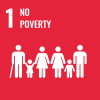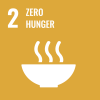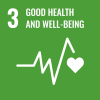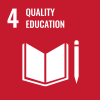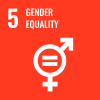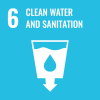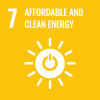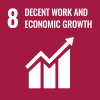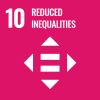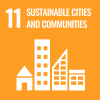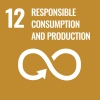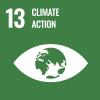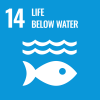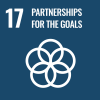Millions of people’s lives have improved due to concerted global, regional, national and local efforts to achieve the Millennium Development Goals (MDGs), which serve as the foundation for the next global development agenda, according to the report launched by the Secretary-General on 7 July 2014.
With many MDG targets already met on reducing poverty, increasing access to improved drinking water sources, improving the lives of slum dwellers and achieving gender parity in primary school, the report says many more targets are within reach by their 2015 target date. If trends continue, the world will surpass MDG targets on malaria, tuberculosis and access to HIV treatment, and the hunger target looks within reach. Other targets, such as access to technologies, reduction of average tariffs, debt relief, and growing political participation by women, show great progress.
The MDG report is based on comprehensive official statistics and provides the most up-to-date summary of all Goals and their targets at global and regional levels, with additional national statistics available online. Results show that concentrated efforts to achieve MDG targets by national governments, the international community, civil society and the private sector are working to lift people out of extreme poverty and improve their futures.
“The Millennium Development Goals were a pledge to uphold the principles of human dignity, equality and equity, and free the world from extreme poverty,” Mr. Ban said. “The MDGs, with eight goals and a set of measurable time-bound targets, established a blueprint for tackling the most pressing development challenges of our time.”
Saving lives in many ways
According to the report, big MDG gains continue. Over the past 20 years, the likelihood of a child dying before age five has been nearly cut in half, which means about 17,000 children are saved every day. Globally, the maternal mortality ratio dropped by 45 per cent between 1990 and 2013. Antiretroviral therapy for HIV-infected people has saved 6.6 million lives since 1995, and expanding its coverage could save many more. Between 2000 and 2012, an estimated 3.3 million deaths from malaria were averted due to substantial expansion of malaria interventions. Since 1995, efforts to fight tuberculosis saved an estimated 22 million lives.
MDGs a foundation for next development agenda
With the targets for the MDGs set to conclude at the end of 2015, UN Member States are in the midst of considering a broader set of goals to follow that are likely to be agreed to by world leaders in September 2015. The report says continued progress towards the MDGs in the remaining year is essential for what comes next. “Member States are now fully engaged in discussions to define Sustainable Development Goals, which will serve as the core of a universal post-2015 development agenda,” Mr. Ban said. “Our efforts to achieve the MDGs are a critical building block towards establishing a stable foundation for our development efforts beyond 2015.” However, some MDG targets related to largely preventable problems with available solutions, such as reducing child and maternal mortality and increasing access to sanitation, are slipping away from achievement by 2015, despite major progress. The report calls on all stakeholders to focus and intensify efforts on the areas where advances have been too slow or not reached all.
Ending open defecation key to greater MDG success
Since 1990, 2.3 billion people have gained access to an improved drinking water source. Over one-quarter of the world’s population has gained access to improved sanitation since 1990, yet one billion people still resort to open defecation. The vast majority—82 per cent—of people practicing open defecation now live in middle-income, populous countries. Much greater effort and investment will be needed to alter inadequate sanitation facilities.
Accelerated action using known solutions needed to help women and children
Worldwide, almost 300,000 women died in 2013 from causes related to pregnancy and childbirth. Maternal death is mostly preventable, however. Most pregnant women in developing regions see a skilled health provider at least once, but only half get the recommended four antenatal check-ups. Preventable conditions, such as diarrhoea and pneumonia, are the main killers for children under age five. In 2012, an estimated 25 per cent of children under age five were stunted—having inadequate height for their age. While this is a significant decline from 40 per cent in 1990, 162 million young children still suffer from preventable chronic under-nutrition. Ninety per cent of children in developing regions are attending primary school. Half of the 58 million out-of school children of primary school age live in conflict-affected areas. Children in conflict-affected areas, girls from poor rural households and children with disabilities are more likely to be out of school. High dropout rates remain a barrier to universal primary education.
Aid money hit record highs, but in decline to the poorest countries
After two years of declines, official development assistance hit a record high of $134.8 billion in 2013. However, aid shifted away from the poorest countries where attainment of the MDGs often lags the most. Eighty per cent of imports from developing countries entered developed countries duty-free, and tariffs remained at an all-time low.
The debt burden of developing countries remained stable at about 3 per cent of export revenue, which was a near 75 per cent drop since 2000.
Better data would help deliver better results
Despite considerable advancements in recent years, the report says reliable statistics for monitoring development remain inadequate in many countries, but better statistical reporting on the MDGs has led to real results. For example, the number of Member States submitting progress reports on HIV/AIDS increased from 102 in 2004 to 186 in 2012. This helped galvanise global efforts. Funding for HIV programmes more than tripled compared to 2004, and 9.5 million people living with HIV were accessing antiretroviral treatment in 2012. The Millennium Development Goals Report, an annual assessment of global and regional progress towards the Goals, reflects the most comprehensive, up-to-date data compiled by over 28 UN and international agencies and is produced by the UN Department of Economic and Social Affairs. A complete set of the data used to prepare the report is available at mdgs.un.org
 Welcome to the United Nations
Welcome to the United Nations
